You’ll find that selecting the right office plant involves more than just aesthetics; it’s about choosing a resilient companion that can thrive in challenging indoor conditions. The most successful desk plants withstand low light levels, irregular watering schedules, and fluctuating temperatures between 65-80°F. As you consider your options, understanding each plant’s specific requirements and maintenance needs will determine whether it becomes a thriving addition to your workspace or a source of frustration.
Contents
- 1 1. Snake Plant (Sansevieria)
- 2 2. Pothos (Epipremnum Aureum)
- 3 3. Chinese Evergreen (Aglaonema)
- 4 4. ZZ Plant
- 5 5. Peace Lily
- 6 6. Spider Plant
- 7 7. Lucky Bamboo
- 8 8. Philodendron
- 9 9. Jade Plant
- 10 10. Cast Iron Plant
- 11 11. Christmas Cactus
- 12 12. Parlor Palm
- 13 13. Rubber Tree
- 14 14. Aloe Vera
- 15 15. English Ivy
1. Snake Plant (Sansevieria)
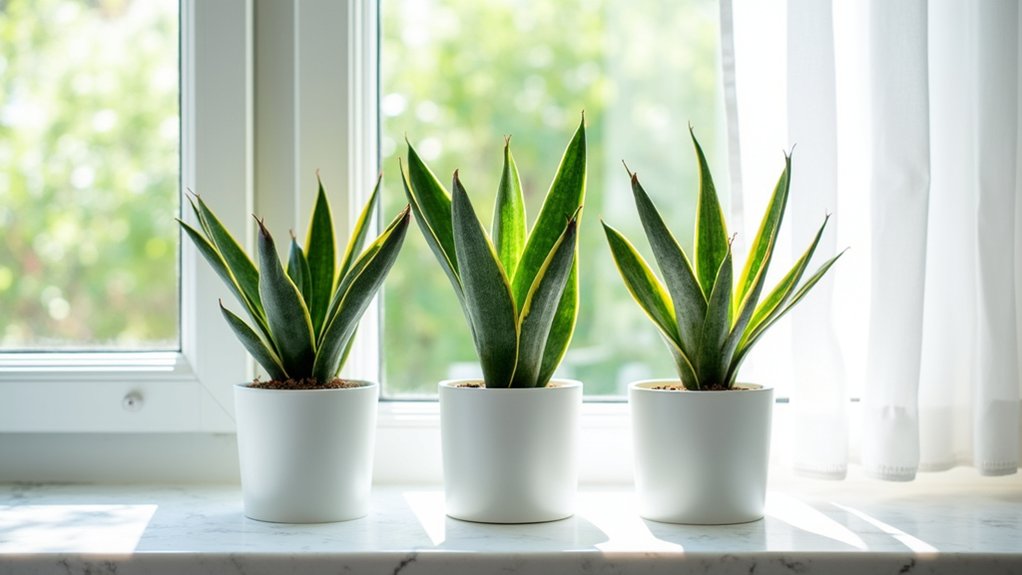
The Snake Plant, also known as Sansevieria or Mother-in-Law’s Tongue, is a striking succulent with tall, stiff leaves that grow upright in a sword-like pattern. Its distinctive appearance features dark green leaves with light gray-green horizontal stripes, though some varieties showcase yellow edges. Beyond its architectural beauty, the snake plant is renowned for its air-purifying abilities, removing toxins like formaldehyde and benzene from indoor environments. This exceptionally hardy plant is perfect for office settings due to its high tolerance for neglect and ability to thrive in various conditions.
- Light: Adaptable to both bright indirect light and low light conditions; can tolerate some direct sunlight
- Water: Allow soil to dry completely between waterings; water less frequently in winter; highly drought-tolerant
- Soil: Well-draining potting mix; prefers slightly sandy soil
- Temperature: Thrives in normal office temperatures (60-85°F)
- Humidity: Tolerates low humidity environments
- Fertilizer: Light feeding with balanced fertilizer during growing season (spring/summer)
- Container: Pots with drainage holes to prevent root rot
- Space: Minimal space required; can grow in tight spots
2. Pothos (Epipremnum Aureum)
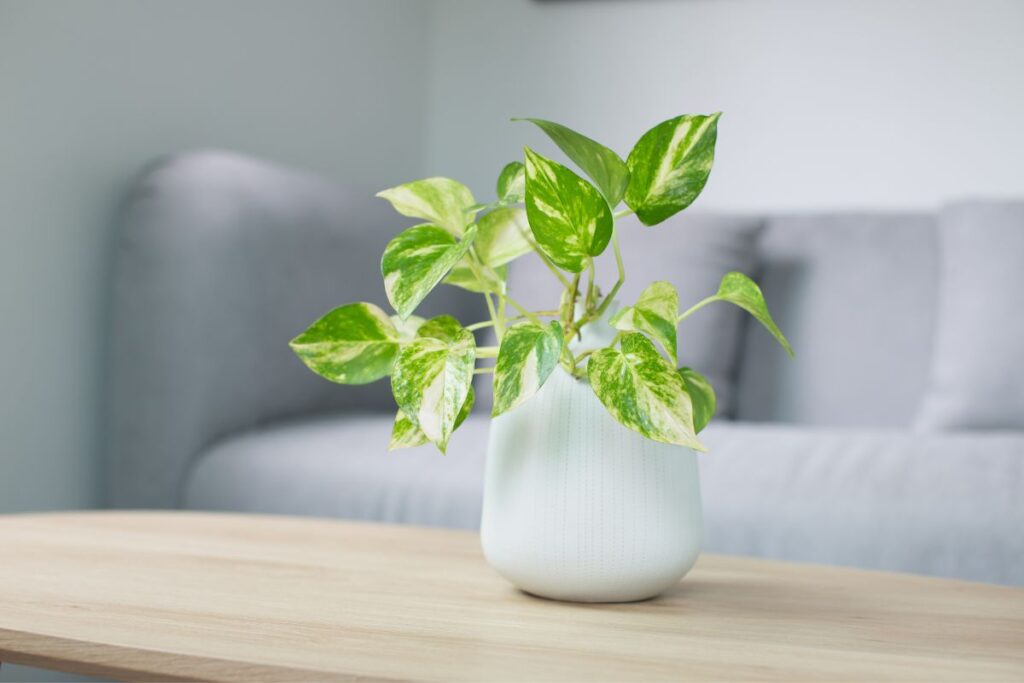
Pothos, scientifically known as Epipremnum aureum, is one of the most popular and adaptable office plants available. This trailing vine features heart-shaped leaves that come in various colors and patterns, including green, variegated yellow, and marble white. Known for its air-purifying qualities and hardy nature, pothos can grow in various conditions and forgives occasional neglect, making it an excellent choice for busy office workers. The vines can either cascade down from elevated places or climb up supports, adding versatile decorative options to any workspace.
- Light: Tolerates low to bright indirect light; avoid direct sunlight; thrives in fluorescent lighting
- Water: Allow top 1-2 inches of soil to dry between waterings; water less in winter
- Soil: Well-draining potting mix; prefers slightly acidic pH (6.1-6.5)
- Humidity: Adapts to average indoor humidity levels; misting optional
- Temperature: Comfortable in normal office temperatures (60-80°F)
- Fertilizer: Light feeding with balanced fertilizer every 2-3 months during growing season
3. Chinese Evergreen (Aglaonema)
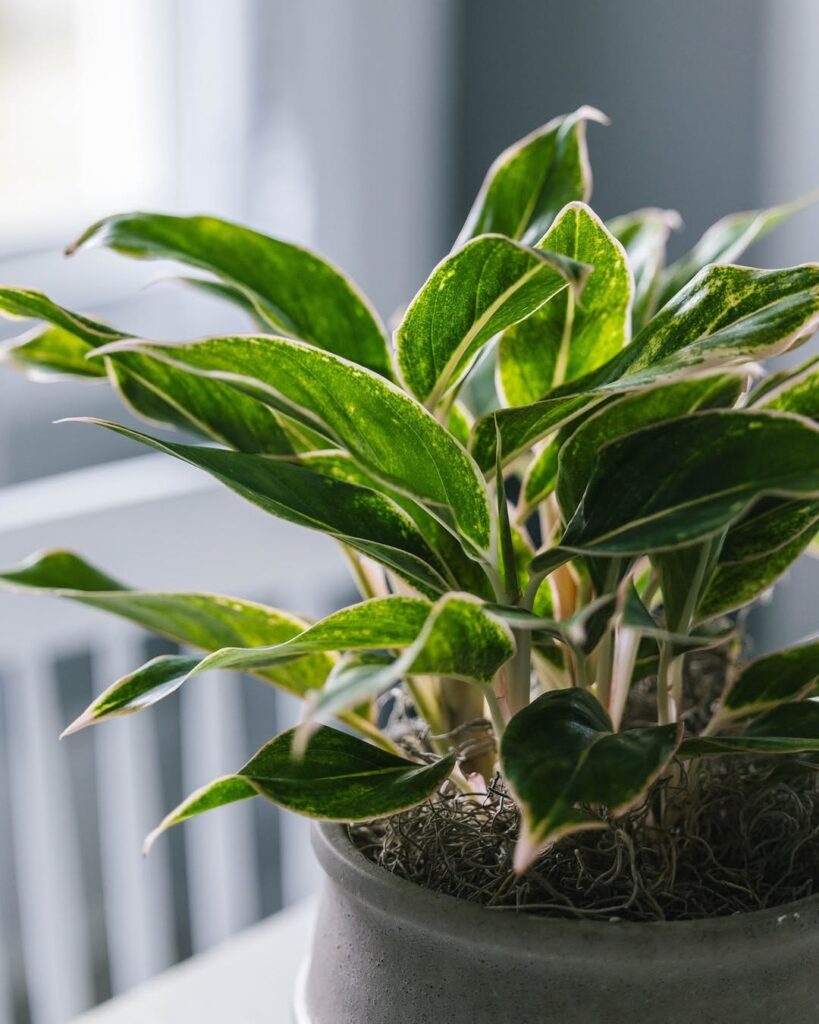
The Chinese Evergreen (Aglaonema) is a popular office plant prized for its striking foliage patterns and exceptional adaptability to indoor environments. Native to tropical and subtropical regions of Asia, this hardy plant features large, oval leaves with various patterns of silver, green, and sometimes pink or red variegation. Its low-maintenance nature and air-purifying qualities make it an excellent choice for office spaces, particularly for those new to plant care or busy professionals who cannot devote extensive time to plant maintenance.
- Light: Tolerates low to medium indirect light; avoid direct sunlight which can burn leaves
- Water: Water when top 1-2 inches of soil feels dry; reduce watering in winter
- Soil: Well-draining potting mix rich in organic matter
- Humidity: Prefers moderate to high humidity; tolerates average indoor conditions
- Temperature: Thrives between 65-80°F (18-27°C); sensitive to cold drafts
- Fertilizer: Feed with balanced houseplant fertilizer every 3-4 months during growing season
- Container: Pot with drainage holes to prevent root rot
- Additional Care: Wipe leaves occasionally to remove dust and maintain glossy appearance
4. ZZ Plant
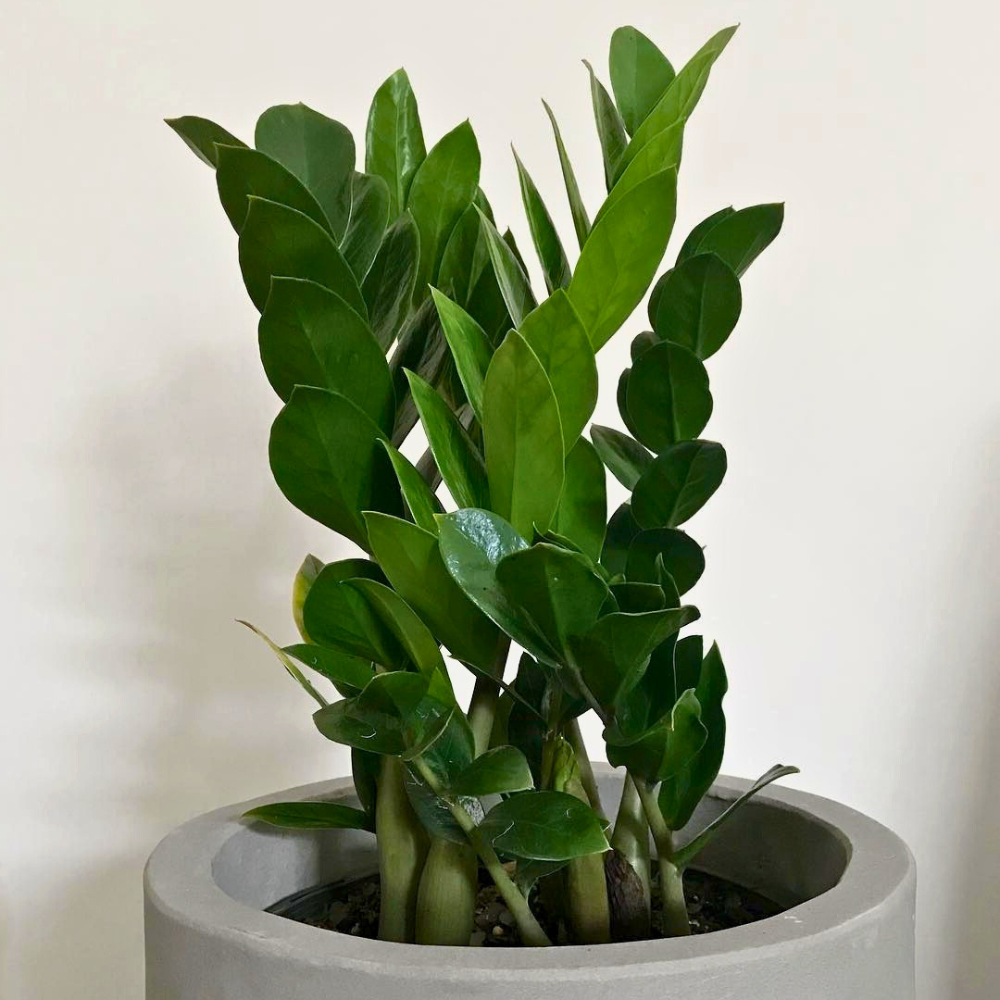
The ZZ Plant (Zamioculcas zamiifolia) is a hardy, low-maintenance indoor plant known for its glossy, deep green leaves arranged in a feather-like pattern on thick, upright stems. Native to Eastern Africa, this drought-tolerant plant has become increasingly popular in office settings due to its ability to thrive in low-light conditions and survive long periods of neglect. Its thick, potato-like rhizomes store water, allowing the plant to withstand occasional dry spells.
- Light: Tolerates low to bright indirect light; avoid direct sunlight
- Water: Allow soil to dry between waterings; water sparingly every 2-3 weeks
- Soil: Well-draining potting mix
- Humidity: Adapts to average indoor humidity levels
- Temperature: 65-75°F (18-24°C)
- Fertilizer: Light feeding every 3-4 months during growing season
- Pot: Container with drainage holes
- Additional: Toxic if ingested; wash hands after handling
5. Peace Lily
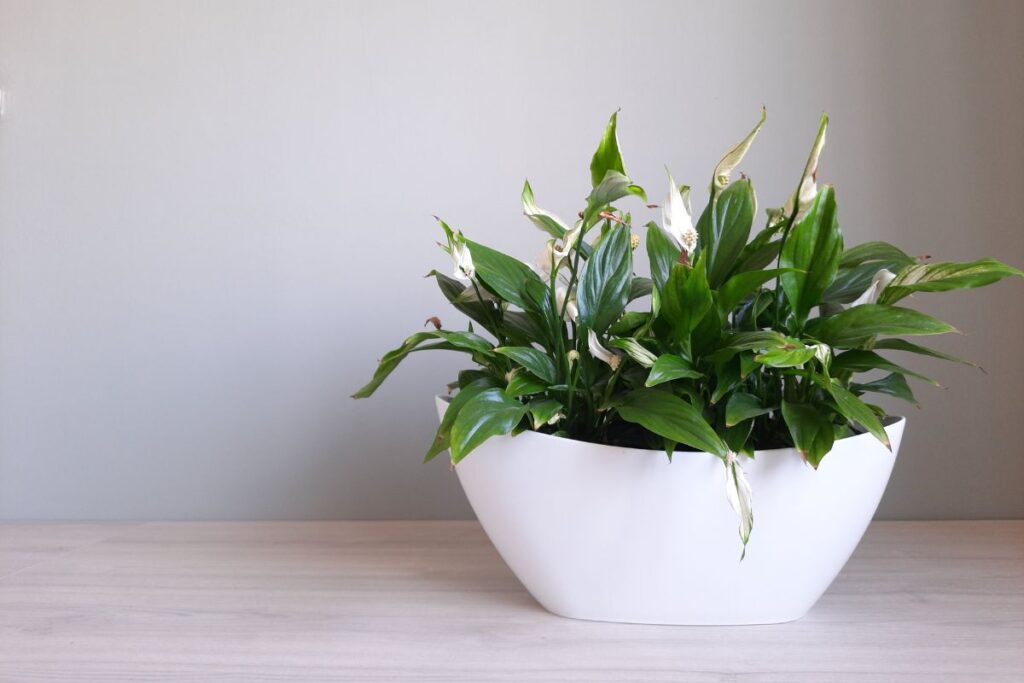
The Peace Lily (Spathiphyllora) is one of the most resilient and forgiving indoor plants, making it perfect for office environments. It can survive in less-than-ideal conditions and bounce back from occasional neglect, while still maintaining its elegant appearance with deep green leaves and white flowers. Even when the plant shows signs of stress by drooping, it typically recovers quickly once watered, earning its reputation as a hardy survivor in indoor spaces.
- Light: Tolerates low to moderate indirect light; avoid direct sunlight
- Water: Keep soil consistently moist but not waterlogged; water when top inch of soil feels dry
- Soil: Well-draining potting mix rich in organic matter
- Humidity: Prefers moderate to high humidity; tolerates average indoor conditions
- Temperature: Thrives in 65-80°F (18-27°C)
- Fertilizer: Light feeding every 6-8 weeks during growing season
- Container: Pot with drainage holes to prevent root rot
6. Spider Plant
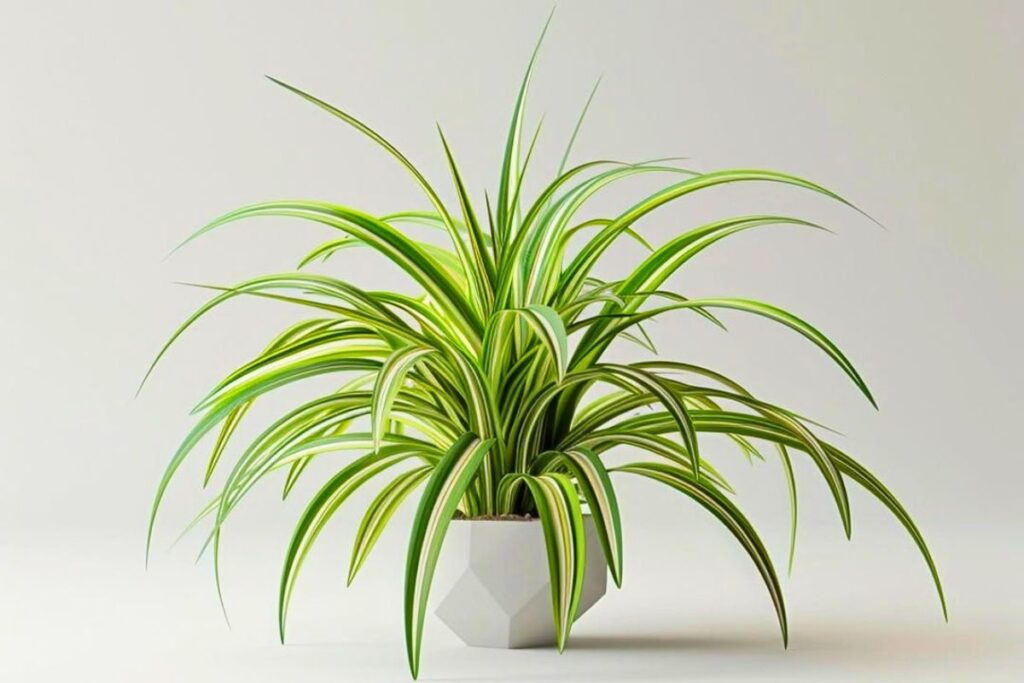
The Spider Plant (Chlorophytum comosum) is one of the most resilient and adaptable office plants available. Its arching green and white striped leaves create an attractive cascading effect, while its ability to produce hanging plantlets adds visual interest to any workspace. This hardy plant can withstand irregular watering and varying light conditions, making it perfect for busy professionals who might occasionally forget their plant care duties.
- Light: Thrives in moderate to bright indirect light; can tolerate lower light conditions but may lose variegation
- Water: Allow top inch of soil to dry between waterings; tolerates occasional drought
- Soil: Well-draining potting mix with good aeration
- Humidity: Adapts to average office humidity levels
- Temperature: Comfortable in normal office temperatures between 60-75°F
- Fertilizer: Light feeding with balanced fertilizer every 2-3 months during growing season
- Container: Any pot with drainage holes; hanging baskets work particularly well
7. Lucky Bamboo
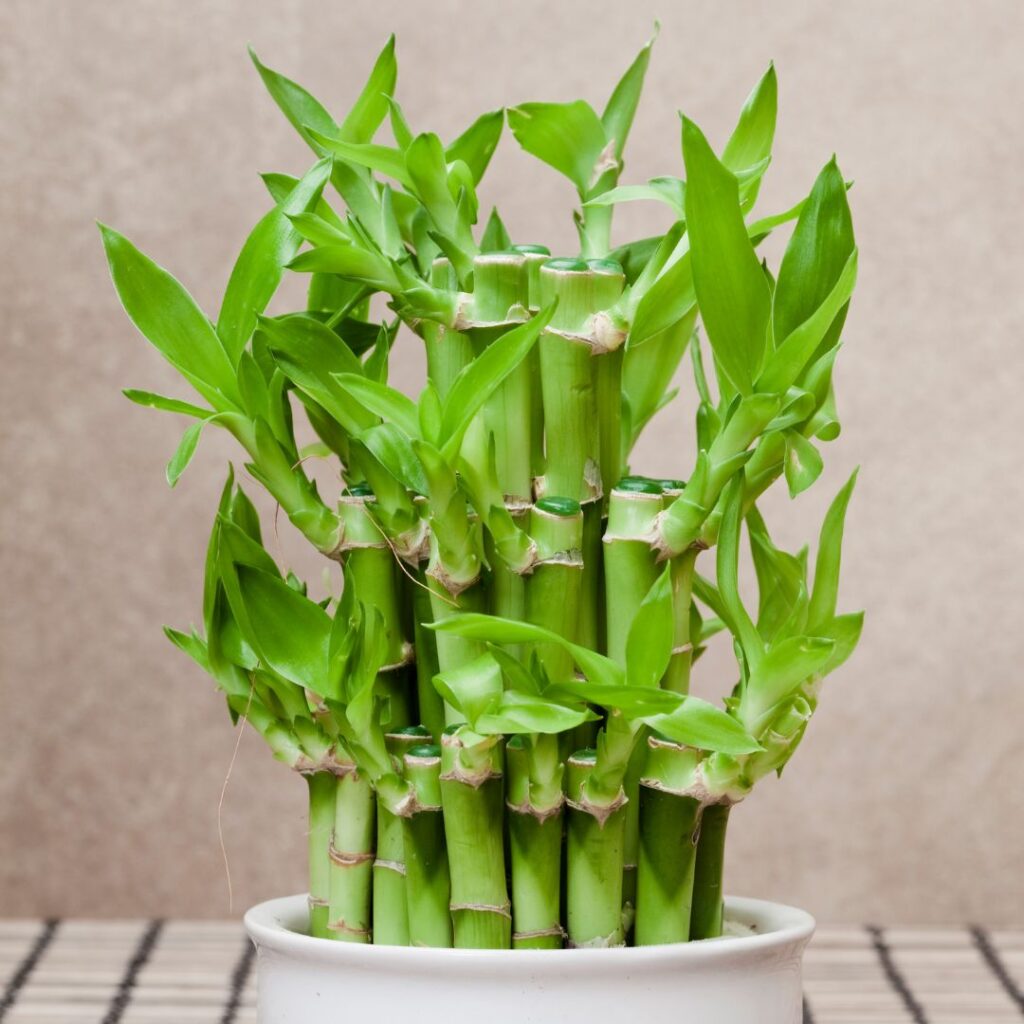
Lucky Bamboo (Dracaena sanderiana) is a resilient and decorative plant that, despite its name, isn’t actually bamboo at all. This popular office plant can be grown in water or soil and is believed to bring good fortune according to feng shui principles. Its stalks can be trained into various shapes and arrangements, making it a versatile choice for desk decoration. Lucky Bamboo can thrive for years with minimal attention, making it an excellent choice for busy professionals.
- Light: Bright indirect light; avoid direct sunlight which can burn leaves; can tolerate low light conditions
- Water: If grown in water, change water every 7-10 days; if in soil, keep consistently moist but not waterlogged
- Temperature: 65-95°F (18-35°C)
- Humidity: Average office humidity is fine; tolerates dry conditions
- Growing medium: Can grow in water with pebbles for support, or well-draining potting soil
- Fertilizer: Feed every 2-3 months with very diluted liquid fertilizer if grown in water; standard houseplant fertilizer if grown in soil
- Container: Clear glass container for water culture; pot with drainage holes for soil
8. Philodendron
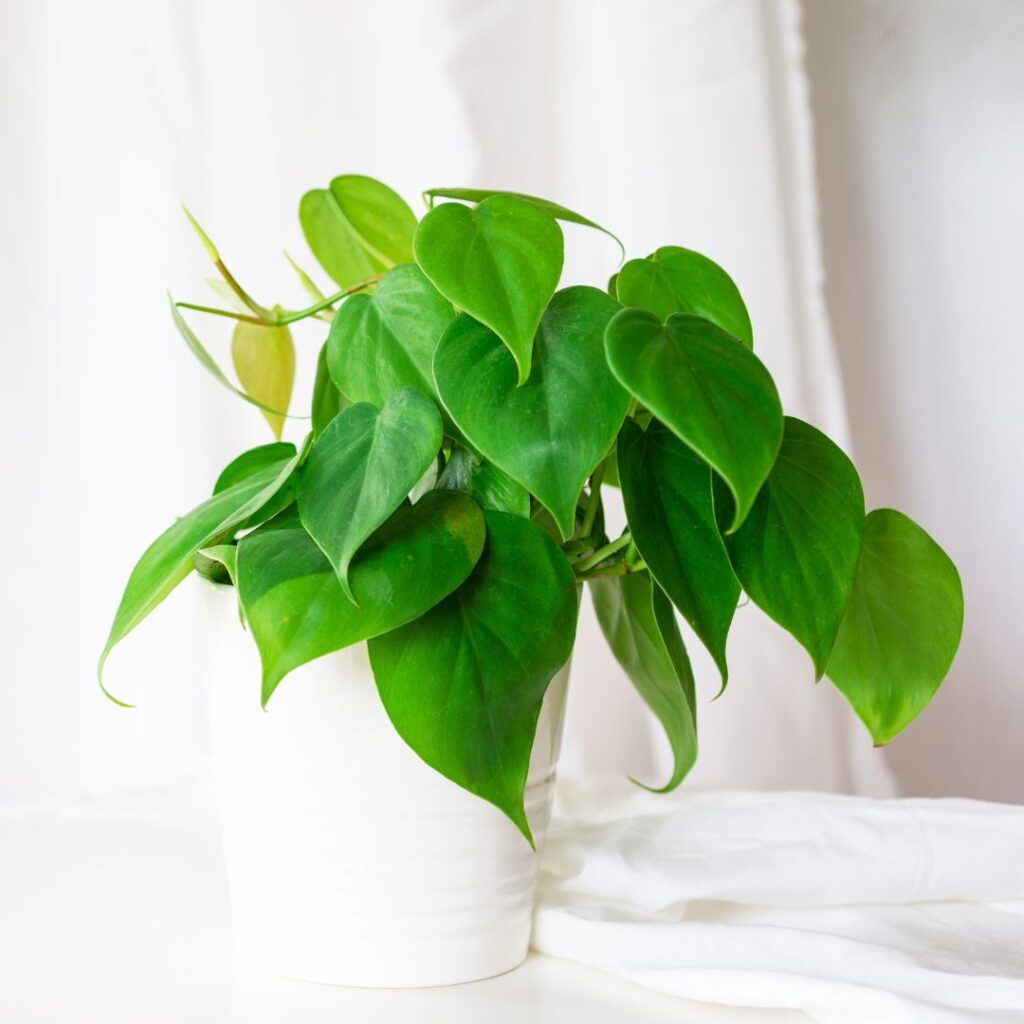
Philodendrons are excellent shade-tolerant plants that naturally grow beneath dense rainforest canopies, making them perfectly suited for dimly lit office environments. Their ability to thrive in low-light conditions comes from their efficient photosynthetic capabilities and their climbing or trailing growth habits that allow them to adjust their position to capture available light. The heart-shaped leaves can adapt by growing larger in shadier conditions to maximize light absorption.
- Light: Thrives in moderate to low indirect light; avoid direct sunlight; can tolerate fluorescent lighting
- Water: Water when top 1-2 inches of soil feels dry; reduce watering in winter months
- Soil: Well-draining, loose potting mix rich in organic matter
- Humidity: Tolerates average indoor humidity levels; benefits from occasional misting
- Temperature: Prefers 65-80°F (18-27°C)
- Fertilizer: Feed monthly with balanced liquid fertilizer during growing season
- Container: Use pot with drainage holes; should be 1-2 inches larger than root ball
9. Jade Plant
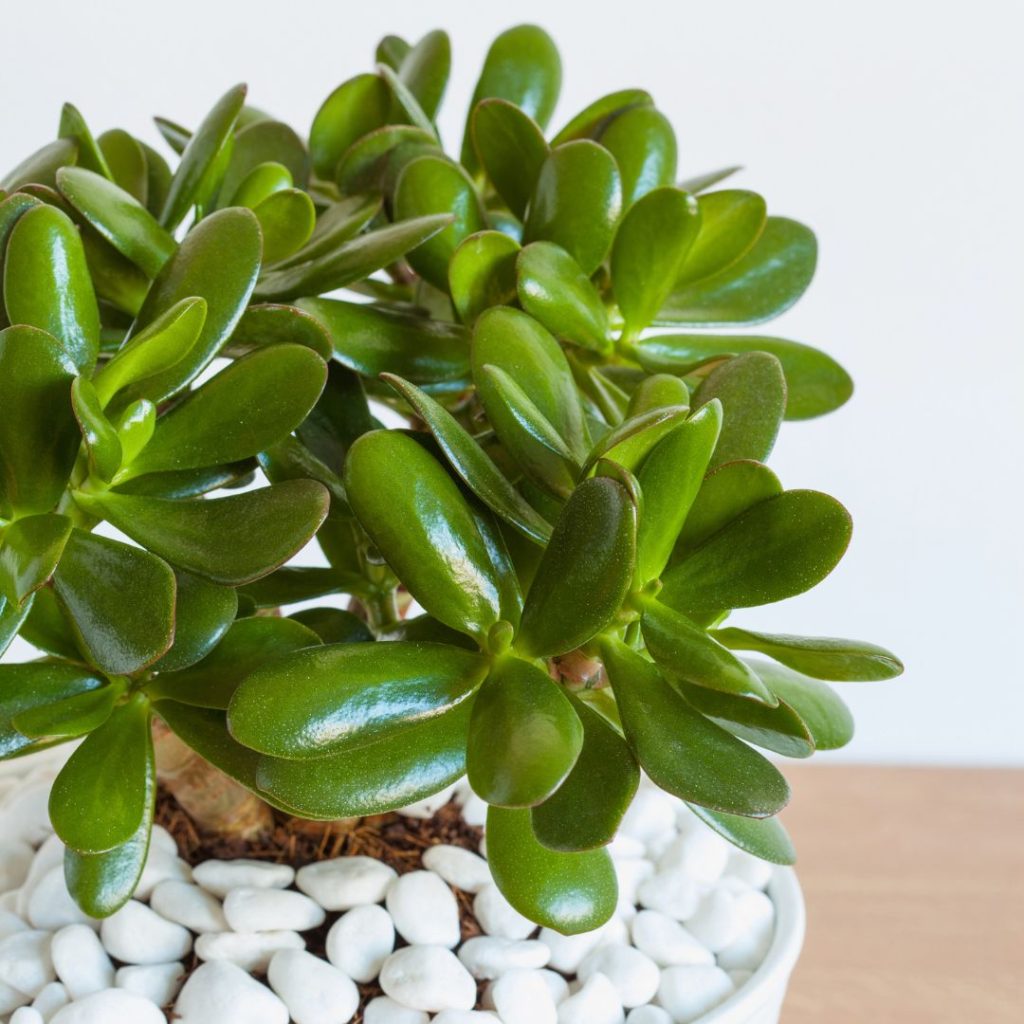
The jade plant (Crassula ovata) is an exceptionally hardy succulent that thrives in office environments with minimal care. Its thick, oval-shaped leaves store water efficiently, allowing it to survive occasional neglect, while its sturdy stems develop a tree-like appearance over time. This adaptable plant can live for decades when properly maintained, making it an excellent long-term desk companion that adds a touch of green to any workspace.
- Light: Bright, indirect sunlight; can tolerate some direct morning sun; avoid harsh afternoon light
- Water: Allow soil to dry completely between waterings; reduce watering in winter
- Soil: Well-draining cactus or succulent mix
- Temperature: 65-75°F (18-24°C); can survive brief periods outside this range
- Humidity: Tolerates low humidity levels common in office environments
- Fertilizer: Light feeding with balanced fertilizer during growing season (spring/summer)
- Container: Pot with drainage holes to prevent root rot
10. Cast Iron Plant
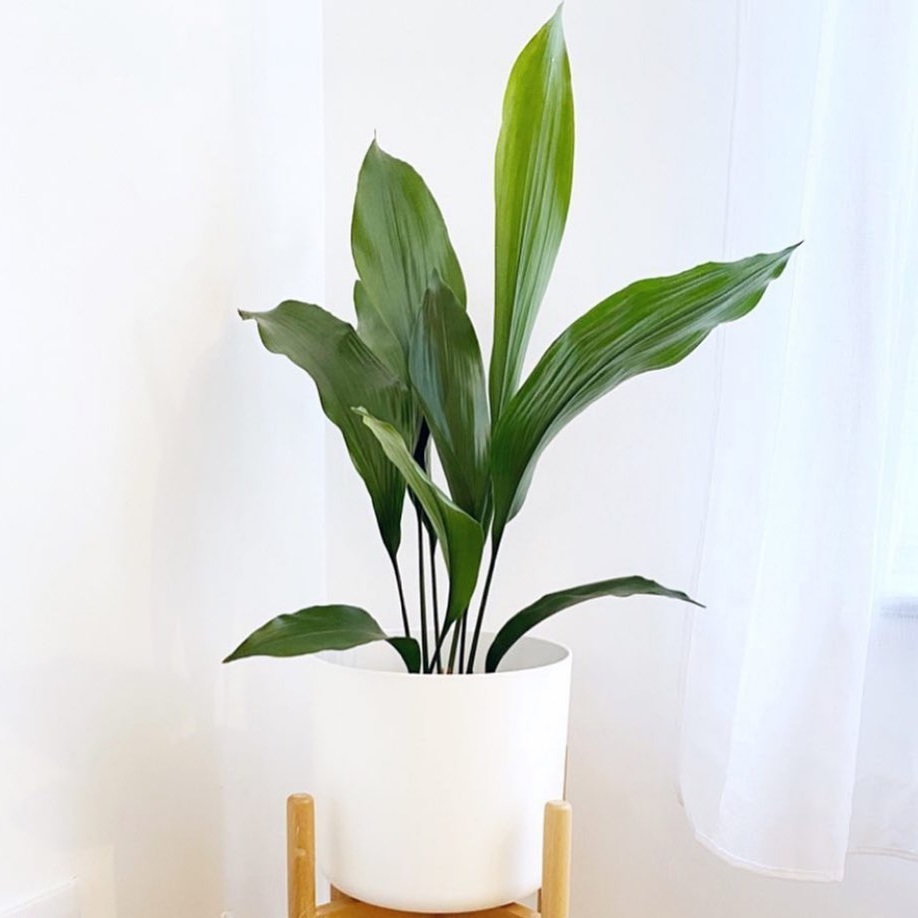
The Cast Iron Plant (Aspidistra elatior) lives up to its name with remarkable durability and resilience in indoor environments. This hardy plant features long, dark green leaves that grow upright from its base, reaching heights of up to 2 feet. Native to Japan and Taiwan, it earned its common name from its ability to withstand neglect, poor conditions, and irregular care, making it an excellent choice for busy office workers or those new to plant care.
- Light: Tolerates low to moderate indirect light; avoid direct sunlight
- Water: Allow soil to dry between waterings; water sparingly in winter
- Soil: Well-draining potting mix
- Humidity: Adaptable to various humidity levels
- Temperature: 60-75°F (15-24°C)
- Fertilizer: Feed lightly with balanced fertilizer every 2-3 months during growing season
- Container: Any well-draining pot with drainage holes
- Growth Rate: Slow growing
11. Christmas Cactus
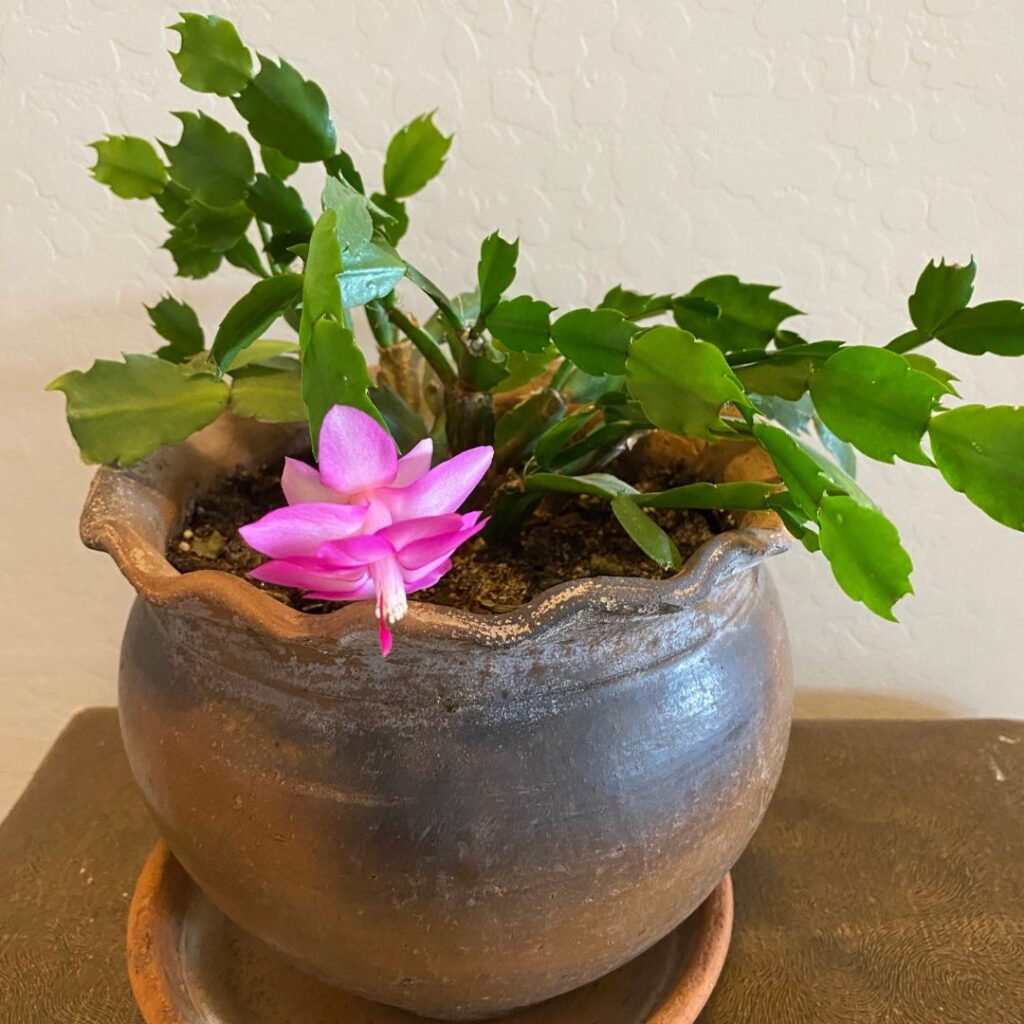
The Christmas Cactus (Schlumbergera) is a low-maintenance succulent that thrives in office environments, making it an excellent desk companion. Unlike desert cacti, this tropical succulent produces vibrant blooms in pink, red, or white during the winter months, typically around December, hence its festive name. Its segmented stems cascade gracefully as they grow, creating an attractive hanging or tabletop display that can withstand occasional neglect while maintaining its healthy appearance.
- Light: Bright, indirect light; avoid direct sunlight; can tolerate lower light conditions
- Water: Water when top inch of soil feels dry; reduce watering in fall to encourage blooming
- Soil: Well-draining potting mix with organic matter; prefer slightly acidic pH
- Temperature: 60-70°F (15-21°C); can tolerate temperature fluctuations
- Humidity: Moderate to high humidity; tolerates typical office air conditions
- Fertilizer: Feed monthly with balanced fertilizer during growing season
- Container: Pot with drainage holes; slightly root-bound conditions encourage blooming
12. Parlor Palm
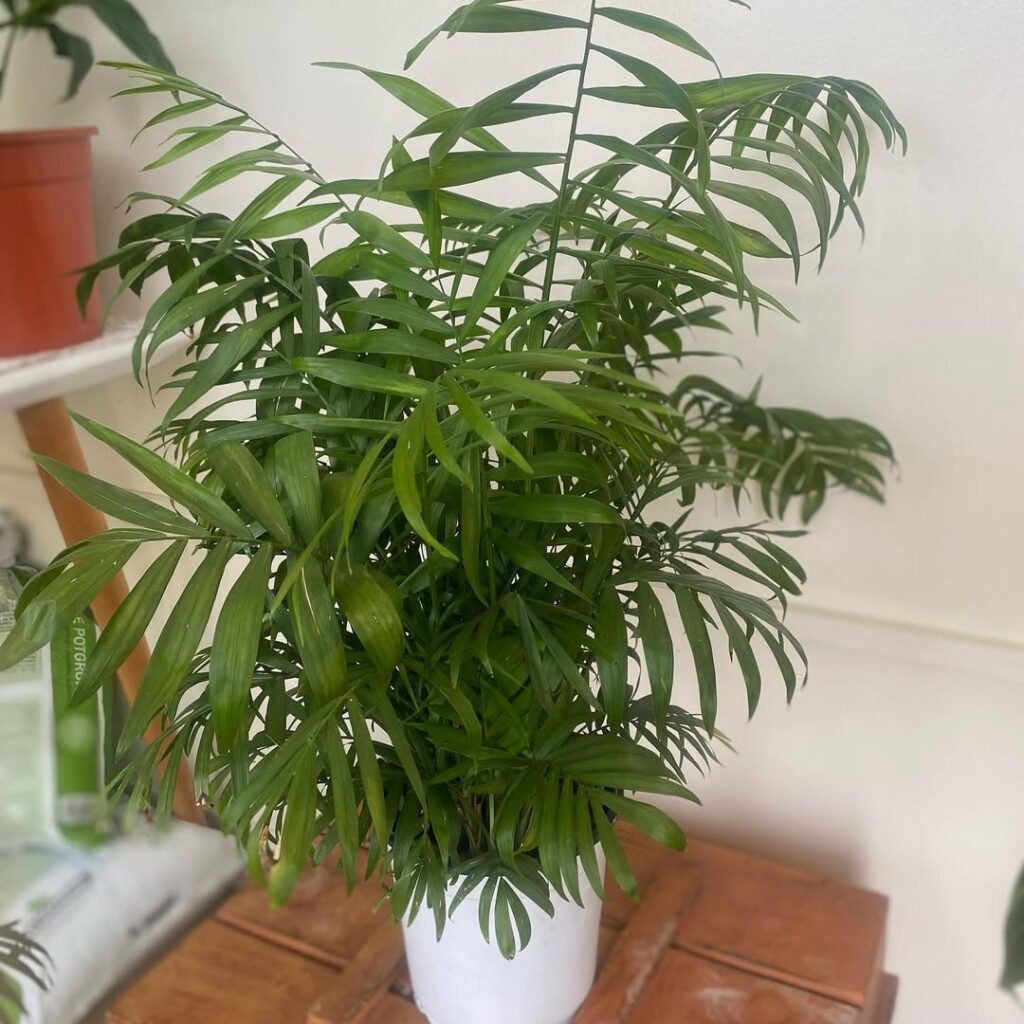
The Parlor Palm (Chamaedorea elegans) thrives as a compact office plant, rarely exceeding 4 feet indoors and maintaining an elegant, tropical appearance despite low-light conditions. Its slender stems support feathery fronds that add a gentle, natural touch to desk spaces without demanding excessive care or spreading beyond its designated spot. This resilient palm species has earned its popularity in office environments due to its exceptional tolerance of indoor conditions and minimal maintenance requirements.
- Light: Tolerates low to moderate indirect light; avoid direct sunlight
- Water: Keep soil lightly moist; water when top inch of soil feels dry
- Soil: Well-draining potting mix rich in organic matter
- Humidity: Adapts to average indoor humidity levels
- Temperature: Prefers 65-80°F (18-27°C)
- Fertilizer: Light feeding with balanced fertilizer every 2-3 months during growing season
- Container: Small to medium pot with drainage holes
- Growth Rate: Slow to moderate growth
13. Rubber Tree
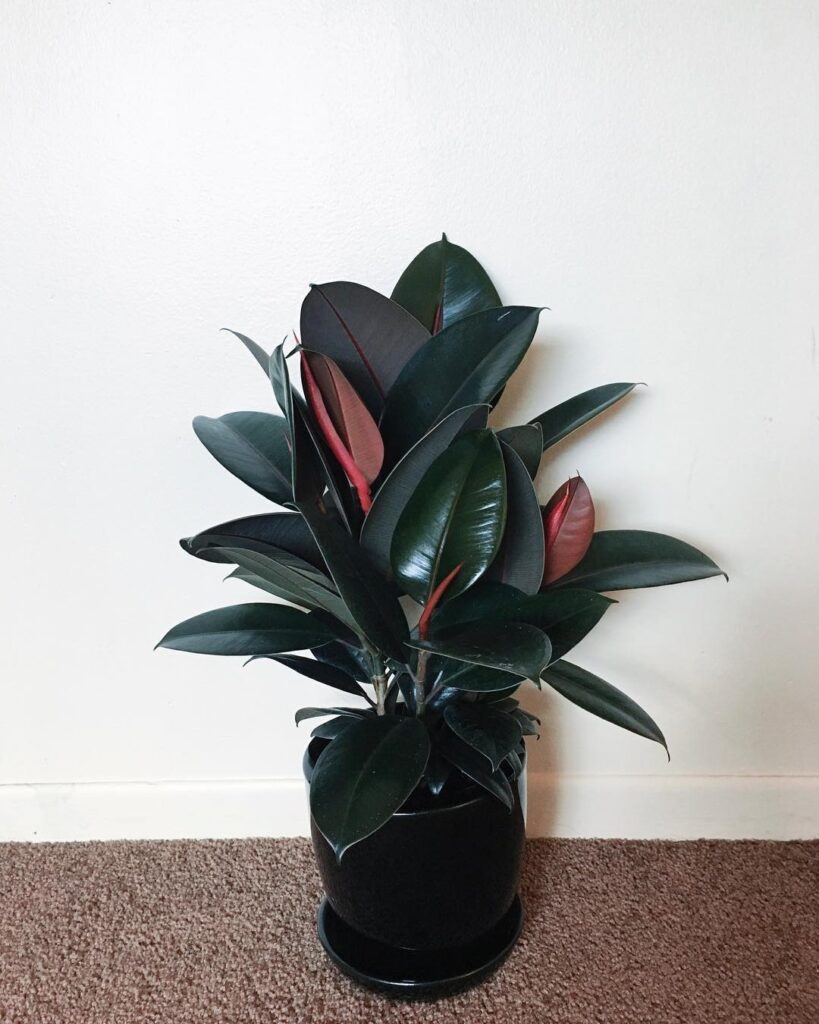
The Rubber Tree (Ficus elastica) is a resilient and impressive office plant that can grow several feet tall even in indoor conditions. With its thick, glossy leaves and upright growth pattern, it makes a striking statement piece while being remarkably adaptable to indoor environments. The plant’s low-maintenance nature and air-purifying qualities make it an excellent choice for office spaces, where it can thrive for many years with proper care.
- Light: Bright indirect light; can tolerate moderate light but may grow slower; avoid direct sunlight which can burn leaves
- Water: Allow top 1-2 inches of soil to dry between waterings; reduce watering in winter
- Soil: Well-draining potting mix rich in organic matter
- Humidity: Moderate to high; benefits from occasional misting
- Temperature: 60-75°F (15-24°C)
- Fertilizer: Feed monthly with balanced liquid fertilizer during growing season
- Container: Use pot with drainage holes; repot every 2-3 years as needed
14. Aloe Vera

Aloe vera is a resilient succulent that thrives in office environments due to its exceptional drought tolerance and minimal care requirements. Its thick, fleshy leaves store water efficiently, allowing it to survive extended periods without watering, while also serving as a practical first-aid plant for minor burns and skin irritations. The plant’s compact growth habit and architectural form make it an attractive addition to any desk space.
- Light: Bright indirect sunlight; can tolerate some direct sun but avoid harsh afternoon exposure
- Water: Allow soil to dry completely between waterings; water deeply but infrequently
- Soil: Well-draining cactus or succulent mix
- Temperature: 55-80°F (13-27°C)
- Humidity: Tolerates low humidity levels
- Container: Terra cotta pot with drainage holes
- Fertilizer: Light feeding with balanced fertilizer every 2-3 months during growing season
15. English Ivy

English Ivy (Hedera helix) is a versatile and adaptable vine that thrives in indoor office environments with minimal light exposure. Its cascading dark green leaves add an elegant touch to desk spaces, whether planted in hanging baskets or allowed to climb small trellises. This plant effectively removes indoor air pollutants and continues to grow steadily even in less-than-ideal conditions, making it an excellent choice for cubicles and windowless offices.
- Light: Tolerates low light but prefers moderate indirect light; avoid direct sunlight
- Water: Keep soil consistently moist but not waterlogged; water when top inch of soil feels dry
- Soil: Well-draining potting mix with good aeration
- Humidity: Prefers moderate to high humidity; mist leaves periodically
- Temperature: Thrives in 60-75°F (15-24°C)
- Fertilizer: Feed monthly with balanced liquid fertilizer during growing season
- Container: Use pot with drainage holes to prevent root rot
